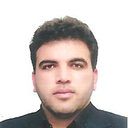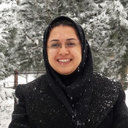Swahili
Albanian
Arabic
Armenian
Azerbaijani
Belarusian
Bengali
Bosnian
Catalan
Czech
Danish
Deutsch
Dutch
English
Estonian
Finnish
Français
Greek
Haitian Creole
Hebrew
Hindi
Hungarian
Icelandic
Indonesian
Irish
Italian
Japanese
Korean
Latvian
Lithuanian
Macedonian
Mongolian
Norwegian
Persian
Polish
Portuguese
Romanian
Russian
Serbian
Slovak
Slovenian
Spanish
Swahili
Swedish
Turkish
Ukrainian
Vietnamese
Български
中文(简体)
中文(繁體)
Journal of Research in Medical Sciences 2018
Watumiaji waliosajiliwa tu ndio wanaweza kutafsiri nakala
Ingia / Ingia
Kiungo kimehifadhiwa kwenye clipboard
Results
The Cox regression model showed that age, race, type of cancer, family history of cancer, and type of treatment had a significant effect on mortality of children diagnosed with cancer (P < 0.05). The hazard ratio (HR) of mortality in 10-15 years old was higher than that of 1-5 years old (P = 0.03, HR = 1.3). The HR of mortality in patients with brain tumor (P < 0.01, HR = 2.24), sarcoma (P < 0.01, HR = 2.32), and neuroblastoma (P < 0.01, HR = 2.56) was twice the value in patients with leukemia. The HR of mortality in patients who had a family history of cancer was higher than that of patients without it (P < 0.01, HR = 1.33). Patients who had undergone chemotherapy along with surgery and radiotherapy (P = 0.02, HR = 0.68) and patients who received chemotherapy along with surgery (P = 0.01, HR = 0.67) had a lower HR of mortality compared to the chemotherapy group.Hifadhidata kamili ya mimea ya dawa inayoungwa mkono na sayansi
- Inafanya kazi katika lugha 55
- Uponyaji wa mitishamba unaungwa mkono na sayansi
- Kutambua mimea kwa picha
- Ramani ya GPS inayoshirikiana
- Soma machapisho ya kisayansi yanayohusiana na utafutaji wako
- Tafuta mimea ya dawa na athari zao
- Panga maslahi yako na fanya tarehe ya utafiti wa habari, majaribio ya kliniki na ruhusu
Andika dalili au ugonjwa na usome juu ya mimea ambayo inaweza kusaidia, chapa mimea na uone magonjwa na dalili ambazo hutumiwa dhidi yake.
* Habari zote zinategemea utafiti wa kisayansi uliochapishwa




